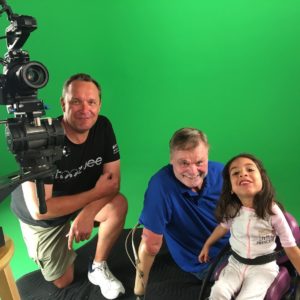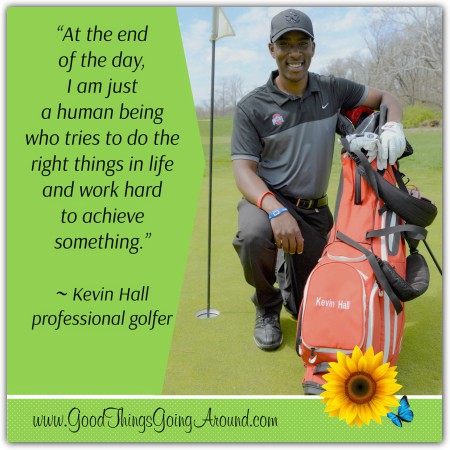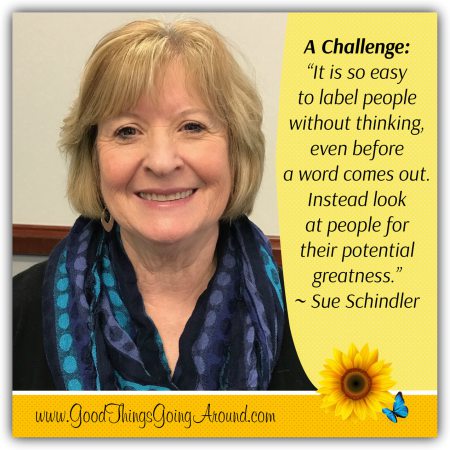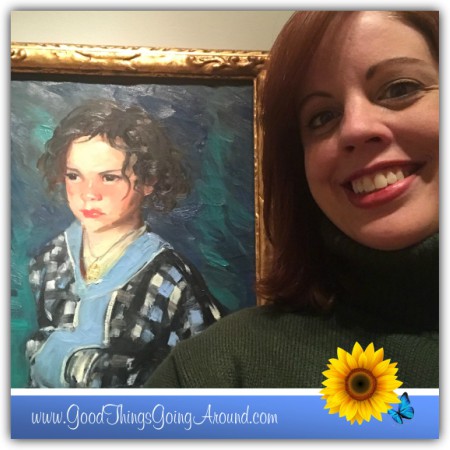featured
Human Values Festival This Weekend
Looking for an opportunity to inspire your children to do good or to meet others who are focused on the good in this world? This Sunday, April 29, the Institute of Sathya Sai Education will be hosting a free community and family-centric Festival dedicated to the practice of five core human values inherent in everyone – Love, Truth, Right Action, Peace and Non-Violence -and to the expansion of love and service in the community.
 Dr. Karthik Raghavan, a member of the Event Coordinator Committee, told me, “Our purpose for organizing the Festival is as an explicit celebration of human values that is inherent in all. We want to create a gathering of like minded folks who are sharing their efforts to improve the community towards the better.”
Dr. Karthik Raghavan, a member of the Event Coordinator Committee, told me, “Our purpose for organizing the Festival is as an explicit celebration of human values that is inherent in all. We want to create a gathering of like minded folks who are sharing their efforts to improve the community towards the better.”
The Festival includes:
An art and creative writing competition. Local students in grades K through 12 have submitted work showcasing their interpretation of the human values.
An art workshop. At around 3:30 pm, Radha Lakshmi with the Kennedy Heights Celebrate heARTt will lead attendees in this thought provoking exercise using a combination of stencils and colored sand and rice flour.
Entertainment. Internationally acclaimed Nimo, known as Empty Hands Music, will perform a very special concert from 5 to 7 pm aimed at spreading the seeds of goodness in the world. According to his website, from an Ivy League education to Wall street to fame and fortune as a MTV Rap star, at some point along Nimo’s journey he realized that we was walking a path of suffering and that the only path to light was through selfless service to others and his own internal purification. For the past 7 and half years Nimo has been serving and working with the underprivileged communities in the Gandhi Ashram in India. Most recently Nimo has reconnected to his roots of music and is offering this gift of love, peace and oneness through his songs: an offering he calls “Empty Hands Music”. www.emptyhandsmusic.org
Community Awards. Nimo will introduce and help recognize Individuals for their service to the community.
About the Institute of Sathya Sai Eduation.
The Institute of Sathya Sai Education is a non-profit character-education institution. ISSE is an organization that is part of bigger org called Sathya Sai International Org or ISSE. The main goal of ISSE is to promote human values through education. They have developed curriculum that they share with teachers to help them incorporate HV into their lesson plans. A good example is taking about George Washington and American revolution. To weave in the story about him and chopping of cherry tree to illustrate the need for telling the truth. It is more of emphasis to things like these that allows children not only learn dates and events in history but look at the human side of the people involved.
Human Values Festival
When: Sunday, April 29 from 3 to 7 pm
Where: Kennedy Heights Arts Center
(6620 Montgomery Road)
Cost: Free

Cincinnati Film Director Has Simple Request
I have a very simple request, one that will no doubt make you smile while you are at it.
 Adorable three-year-old Gia Lopez was not supposed to live due to a genetic disorder known as spinal muscular atrophy. But, today, she is flying with a dragon and starring in her very first film that my friend John Lawson has directed/produced.
Adorable three-year-old Gia Lopez was not supposed to live due to a genetic disorder known as spinal muscular atrophy. But, today, she is flying with a dragon and starring in her very first film that my friend John Lawson has directed/produced.
By watching and sharing Gia and the Dragaon, you will be helping the film to win the Easterseals Disability Film Challenge. Judges will review the OFFICIAL YouTube and Facebook Videos for the number of overall views, shares, and likes. You have until April 29 to take action!
One of the goals of The Easterseals Disability Film Challenge is to change the way disability is viewed in media by giving filmmakers the opportunity to collaborate and tell unique stories that showcase disability in its many forms. The Best Awareness Campaign helps to further this goal through grassroots publicity campaigns that raise the visibility of the films entered in the challenge. This visibility of film entries can also lead to jobs for everyone that is involved in the creation of a film. Whether your goal is to be an actor, director, writer, producer, or any combination of the above, the film challenge can be the door opener to the next step in establishing your entertainment career. Remember, work leads to work!
As in any competition, there are rules. Among those in the Film Challenge – teams are given a theme and genre and four props on the morning of the commencement of film production; they are given a weekend to create the film from start to finish; and they must have both people with and without disabilities involved.
A track record for John
This is not the first entry for John, whose roots are in Cincinnati. He won Best Film in the very first year of the Challenge. Last year he entered again with Whitney’s Wedding starring well known actress Jamie Brewer, who won in the Best Actress category. That film went on to be accepted in 12 film festivals around the world, winning over six awards including three Best Film awards, three Best Actor awards for Jamie, and two Best Director awards for John.
John’s inspiration for Gia and Dragon came from reading a children’s book that featured kids with and without disabilities. “I thought it’d be a cool way to introduce my grandbaby to disabilities,” he told me.
John’s team began writing at 6 pm on a Friday night and started shooting the film Saturday morning. By Sunday they were busy in the editing bay. This marks the very first entry in the contest that include animation.

Kevin Hall Broke The Mold In Golf
Each of us has a fire deep inside – a flame that, with kindling can burn bright, its heat fueling our pursuit for something that makes us feel alive.
Kevin Hall’s fire was lit more than 25 years ago, after school one day on the Avon Fields Golf Course. He remembers those moments as if it they  yesterday. It was an afternoon following his last class when he walked onto the driving range for his very first ever lesson with Sonny Barnes. The then bright eyed nine-year-old with a natural ability for sports paused. Holding a club in his hand, he stood and watched other golfers. He noticed their every movement, the way they positioned their body, the tightness with which they gripped their club, their weight shift, and the direction of the ball as it became airborne. Like a sponge, Kevin soaked it all in, learning from observation their focus and technique.
yesterday. It was an afternoon following his last class when he walked onto the driving range for his very first ever lesson with Sonny Barnes. The then bright eyed nine-year-old with a natural ability for sports paused. Holding a club in his hand, he stood and watched other golfers. He noticed their every movement, the way they positioned their body, the tightness with which they gripped their club, their weight shift, and the direction of the ball as it became airborne. Like a sponge, Kevin soaked it all in, learning from observation their focus and technique.
There is a lot of complexity to the anatomy of a solid golf stroke. Much more than stepping up to a little white ball, holding a club with your hands and powering a swing with all that you have.
In those few minutes, Kevin got it. He wrapped his hands around the club handle and mimicked what he saw. It was a solid contact. The ball finished about 125 yards away.
Kevin was hooked.
As a teenager, he met Tiger Woods, at a Cincinnati golf clinic. After giving Kevin a tip on driving the ball further, Tiger looked the young player in the eyes and told him, “I’ll see you on the Tour someday.”
Every day since, Kevin has had one dream. One focus. To be a professional golfer. Not just a teaching professional, a PGA Tour member.
AND, a PGA Tour member who would break out of the mold. Kevin is African American in a predominantly white sport; but also, he is someone who will never hear the crack of his club as it makes impact on the ball. Kevin is deaf, losing his hearing when he was two years old from H-flue meningitis. (His initial diagnosis was death or life as a vegetable.) He relies on feel and sight to know when he has hit a good shot. He hears his fans’ ovations with his heart.
The year was 2004 when Kevin, a graduate of St. Rita School for the Deaf, would win the individual Big Ten Championship by 11 shots as a scholarship athlete on The Ohio State University’s golf team. That, Kevin told me, was one of is proudest moments. “It was probably the greatest gift I could have given my mom since it was also the first year after she lost her mother. It was great to just play sold golf and get it done for her.”
Kevin was the first African American golfer at OSU, serving as co-captain his junior and senior years. He turned professional after graduating in 2005 and logged 14 years playing in the minors. Last February (2017), he was honored with the Genesis Open’s Charlie Sifford Exemption by the Tiger Woods Foundation, given annually to a minority golfer. He is a member of the 2018 Web.com Tour.
Reaching his goal is no longer just a dream. It is a reality.
“Success did not come quickly after I turned pro. There were periods where Golf was just plain tough for me and periods where I questioned myself but nothing has been as hard as dealing with life being a Deaf person,” Kevin told me. “Dealing with not only that but the struggles that come with playing professional golf has strengthened my resolve because I see what I’m made of and I know I can hang in there and get it done.”
I asked Kevin a few more questions.
Lisa: What does success look like for you?
Kevin: Creating goals and sticking to it through the good and bad times. Success is the feeling I get when I’ve put in the work and accomplished my goals but it can also be the feeling at the end of the day that I’ve given it everything I’ve got.
Lisa: Do you see yourself as a role model and inspiration to others?
Kevin: I know that my story inspires others and God is using me to do just that. At the end of the day I am just a human being who tries to do the right things in life and work hard to achieve something. If that inspires even just one person to reach deep inside and be extraordinary then I’m happy about that.
Lisa: Outside of golf, what is another one of your life goals?
Kevin: I just want to do the best I can in life and to make my mark in the world. If I keep doing what I’m doing, I will do just that. 🙂

Sue Reminds Us To See Possible Greatness
Sue Schindler remembers the moment as if it was yesterday. She was eight years old and she was terrified. Sitting beside her was her dad who was about to call her third-grade teacher. For a young daughter of a father who was known to raise his voice now and then, those few seconds of uncertainty felt like an eternity. “In those days,” she recalled, “kids were called on the carpet in class either because they were disruptive or were academically struggling. I was the second.”
 Sue dramatized the impact of her early years before our Toast of the Town of Kenwood Toastmasters Club this past week in a speech, and with it, some powerful lessons that we all can learn from.
Sue dramatized the impact of her early years before our Toast of the Town of Kenwood Toastmasters Club this past week in a speech, and with it, some powerful lessons that we all can learn from.
“I didn’t care about academics that year.,” Sue continued. “Mrs. Seim would walk through the room and look at our papers. She would look at me and say, ‘You are just not like your sisters.’ What she meant was, I was stupid. I wasn’t understanding and my sisters were so much smarter.”
Such a deflating choice of words from an adult who, in that moment, could have just as easily bolstered her student instead. Had Mrs. Seim delved into why Sue wasn’t achieving high scores like her sisters, that third grade teacher would have learned it was just at the end of the last school year when Sue’s mother died suddenly. That kind of tragedy is not easy for anyone, especially a little girl who would never again have her mom to greet her in the morning or to ask her about her day in the evening.
Luckily for Sue, she had a father who understood.
“My dad was really cool and assured me that I would catch up,” Sue told us. “That was a special time with him. One of the things I loved about my dad was that he never said to me, ‘You are not like your sisters.’ Instead he’d looked at what I was studying and went, ‘No wonder you didn’t understand it. This is how I learned it in school. And this is how I am going to teach you.’
And all of a sudden I caught up.”
At the end of that year, Sue was promoted to fourth grade. And she was super excited to be able to spend her days surrounded by friends. However, instead, she was sent to general education. Again, Sue was devastated. She had worked so hard to catch up…and it didn’t matter. It didn’t pay off.
It was yet another lesson in punishment for a girl who had not even reached her teen years.
“The first time I stepped into Mrs. Clark’s room I could feel a difference. It was like right then she never saw any of us as having possible greatness. We were those general education kids she was forced to teach and to get that paycheck,” Sue recalled. “By the time I was in fifth grade, I was purposefully putting answers down incorrectly because I didn’t want to stand out as a kid who knew the answers when others didn’t.”
What a difference a year can make
Whether by fate or luck, in Sue’s sixth grade, she found herself in the classroom of Ms. Strickland, one of those very special teachers who saw in every child their awesomeness.
“She didn’t care what level you were on or what grade you were on, she knew that we all had possible greatness, and luckily, she took me under her wing and encouraged me,” Sue told us.
By the seventh grade, Sue was back with her friends and never looked back again.
Ms. Strickland and her dad made such a huge impact on Sue that while in college, she switched to special education path because, she told us, “I saw that those kids were the ones that were put into the basement classrooms, in the makeshift janitor closets. They were told they didn’t have possible greatness. If I could take what I learned from my dad and teach them at their ability level and say, ‘hey you guys are great,’ I knew I too could make a difference. And I did.”
With that, Sue looked out into our Club, and posed these two challenges.
1. It is so easy to label people without thinking even before a word comes out of your mouth. Instead, look at people for their potential greatness. Delete those labels and negative judgements. Reach out and say hi.
2. When you go home tonight, look in the mirror and see your own possible greatness and what you have to offer.
A personal note:
I most definitely see and admire Sue’s awesomeness. She and I first came to know each other when we worked together years ago at an organization called the Inclusion Network, which promoted the inclusion of people with disabilities. We reconnected on LinkedIn last year when she reached out to me, out of the clear blue, to tell me how impressed she was with my work on a project. Little did she know, it happened to be a time when I really needed encouragement. It was fate, just as it was fate for her to find herself in Ms. Strickland’s classroom at just the right time. Sue has been a shining light for me ever since. She is one of the most uplifting people I have ever come to know and has this magical way of bringing out the best in everyone. My world is a better place for having her in it.

Curiosity Inspires This Art Museum Exec
“So many people inspire me every day. I get inspired by the smallest thing. I am a really curious person so anyone who is embracing who they are and following where their curiosity leads them inspires me.” ~Emily Holtrop
How cool is that, to be inspired by curiosity every day!
 It is no wonder Emily, who is director of learning an interpretation at the Cincinnati Art Museum, loves her career so much – and does such an amazing job that she was just presented the 2018 National Museum Education Art Educator Award.
It is no wonder Emily, who is director of learning an interpretation at the Cincinnati Art Museum, loves her career so much – and does such an amazing job that she was just presented the 2018 National Museum Education Art Educator Award.
Emily works with a team to create public programs and experiences that bring to life the Art Museum’s collection and special exhibitions, and also works closely with curators to craft stories and messaging for visitors. Part of that includes writing the content for most of the gallery and family guides in a special exhibition and overseeing the creation of all hands-on interactives. In many ways she sees herself as the voice for the visitors, seeking their input for why something is or isn’t interesting, or is important to add.
I asked Emily some questions to get to know her better. Please continue reading.
Lisa: With such a passion for creative expression, was art a part of your childhood?
Emily: My grandparents owned a music store and my mom was an art and home economics teacher so I grew up in creative house. We were always encouraged to play an instrument, draw, sew, just create. I still create today, I am an avid knitter and know my way around sewing machine.
Lisa: They say that if you love what you do, you never work a day in your life. What gives you the most satisfaction in your work?
Emily: Well, I love being in the galleries talking about works of art with our visitors. I don’t get to do that very often but when I do, I feel energized. I also really love creating interpretive materials and interactive for people to use to enhance their visit. The recent launch of MyCAM at the museum was a huge project for me of which I am very proud.
Lisa: In your opinion, how important is art education for young children?
Emily: This is so huge. Getting kids involved in the arts at a young age is so important. Art can teach them creative thinking, empathy, persistence, patience, critical thinking, independence, you name it. I see kids every day at the Museum who are making that connection with art – putting the dots together.























